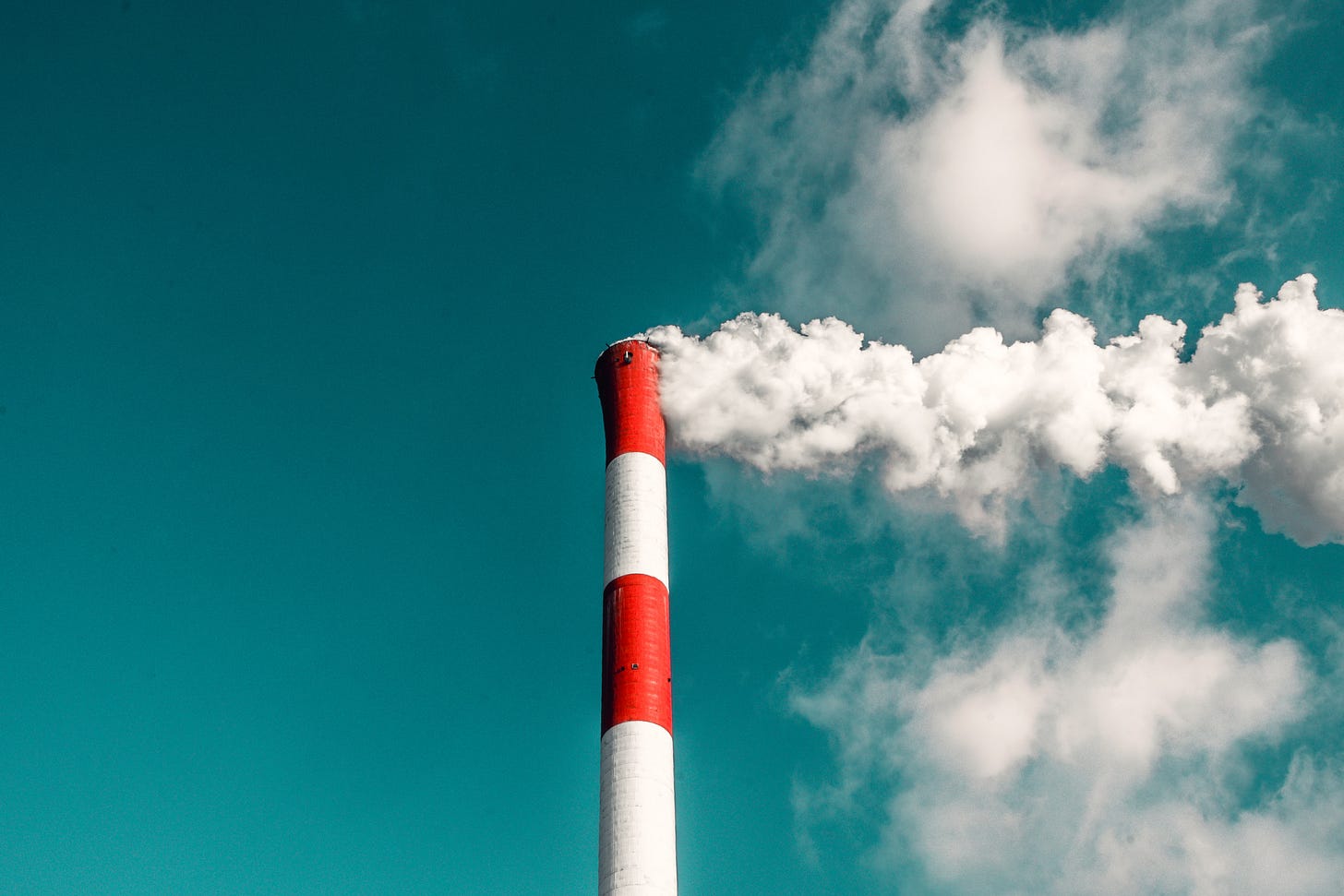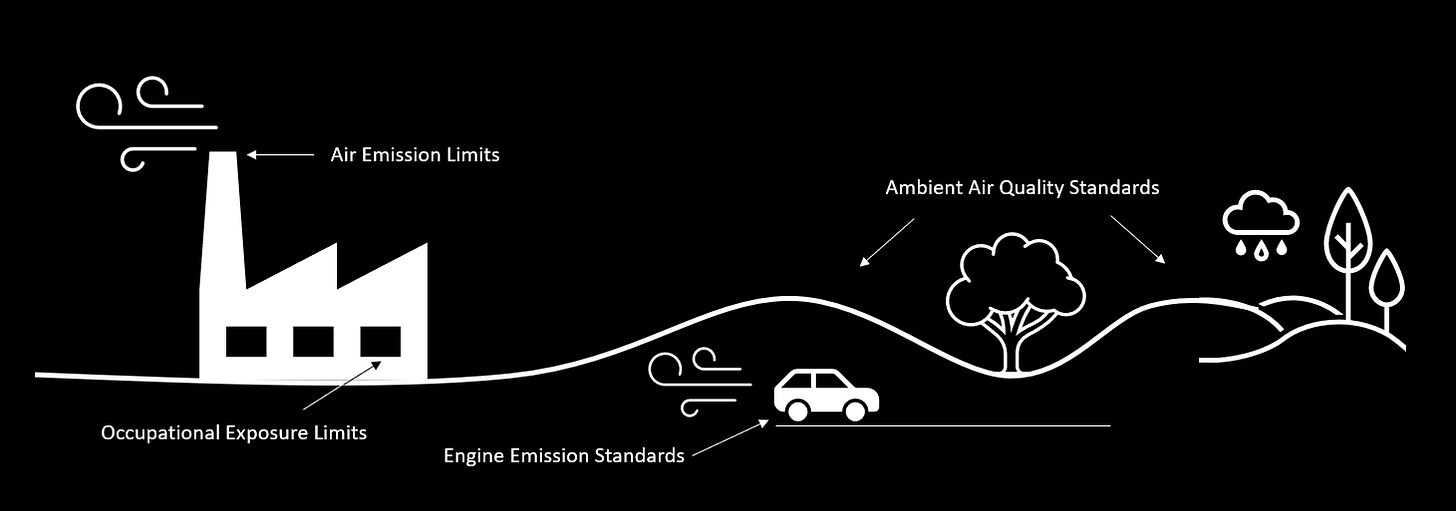Hello!
The World Health Organisation claims that:
‘‘Air pollution kills an estimated seven million people worldwide every year.’’
This letter will give you an instant upgrade in your understanding of the basic science behind this invisible killer.
Overview
Air pollution originates from a range of sources, from industrial chimney stacks, dust from the earth, through to the evaporation of volatile compounds from chemical products in the home.
Nitrogen dioxide (NO2), sulphur dioxide (SO2), ozone (O3) and particulate matter (PM) are among the pollutants of most concern that are regulated in order to protect human health.
In almost all developed countries around the world, air pollution is DECREASING, due in large part to better industrial technologies, more efficient vehicle engines and cleaner fuels.
Carbon dioxide is NOT an air pollutant.
Air pollution is NOT the same as climate change.
A closer look
The air we breathe is predominantly made up of a fairly consistent mixture of nitrogen and oxygen. There is also other stuff mixed in, for example gases like carbon dioxide, argon, and particles like soot, dust and sand. The type and quantity of these ‘contaminants’ depends on where you are in the world, your local environment, whether indoors or outdoors, and so on. Some occur naturally, some are put there from human activities.
Air pollution normally refers to those components that are put there from human activities, and there is normally an implication that such pollution will cause some sort of irritation, harm, or even death to those exposed to it.
Common sources of air pollution
You are exposed to air pollution both indoors (within the home or workplace), and outdoors (from industry or vehicles, for example).
Indoors, we might be concerned with pollutants such as carbon monoxide (from incomplete combustion from gas boilers, for example), or very volatile (readily evaporating) compounds known as 'VOC’s', coming from things like chemical and plastic products. Indoor air pollution is a very large topic in its own right, but for the sake of brevity is not the main focus of this letter.
Pollution can be broadly categorised into gases and particlates (small solid particles). Of most concern, and subject to the majority of outdoor air pollution regulations, are those pollutants that are a product of combustion. Vehicle engines and industrial processes being among the largest contributors.
How is air pollution formed in the first place?
When a fuel burns (coal, gas, petrol, diesel, etc.) it will, under ideal conditions, form carbon dioxide and water. Impurities contained within the fuel, as well as ‘incomplete’ combustion, will result in additional compounds - the 'pollution' - being present in the exhaust pipe or chimney stack.
There are many such combustion-related compounds, but of most concern are;
Nitrogen dioxide (NO2)
Sulphur dioxide (SO2)
Particulate matter (PM)
PM is further defined by how big it is, for example PM10 and PM2.5, with the numbers representing the size of the particle in microns (1 micron = 1 thousandth of a millimetre).
How dangerous is air pollution?
According to the headline figures such as those given by the WHO, air pollution is one of the most prolific human killers.
However, it is important to note that such figures are statistical constructs. Rarely, if ever, would ‘air pollution’ be mentioned on a death certificate as the main cause of death.
Seemingly countless studies are undertaken that show correlational links between elevated levels of air pollution and an ever growing range of health impacts ranging from asthma and cancer to reproductive complications and cognitive impairments. These are usually correlational studies, and in fact very few clinically controlled studies have been carried out in this area - perhaps for obvious ethical reasons - so we should be cautious about drawing hard and fast conclusions as to exactly ‘how’ dangerous or deadly air pollution is.
Is it legal to put pollution into the air?
Laws do exist to control the amount of pollutants released into the air. Concentrations of pollutants in the air are subject to limits which can apply at the point of discharge, such as an engine exhaust pipe or a factory chimney stack, or in the general ambient environment where people can be exposed to them.
Monitoring of air pollution is required by authorities using sophisticated measurement techniques capable of detecting often trace concentrations of pollutants.
Furthermore, governmental ‘permitting’ processes require predictive modelling, using mathematical simulation tools, to determine the likely impact to ambient (background) air a particular development (e.g. an airport, new factory, or road) will have BEFORE it is built.
Carbon dioxide is not an air pollutant
Carbon dioxide is NOT an air pollutant regulated for its health impacts in the same way that those mentioned previously are. Carbon dioxide does not directly cause health impacts. Carbon dioxide is, fundamentally, plant food. US EPA - arguably the most influential environmental protection agency in the world - has considered classifying carbon dioxide as a pollutant due to its apparent role in climate change.
This was pushed particularly during the Obama administration, although a recent check on the EPA website confirms that it remains absent from their latest list of ‘criteria pollutants’.
What happened to the hole in the ozone layer?
Back in the 1980’s the world became aware of the hole in the ozone layer, and the subsequent potential damage to human health from the resulting increase in UV rays. The 1987 Montreal protocol phased out the use of a type of air pollutant called CFC’s. These compounds were used as very effective refrigerants among other applications, but were also found to deplete the ozone found in the outer layers of the earth’s atmosphere. The latest reports show that the ozone layer is in much better shape that 30 or 40 years ago.
I hope that this letter gives you a good overview of the Air Pollution topic!
It is a really huge area of study, with many spending their entire careers studying various aspects of it, with so many interesting points that could warrant further elaboration.
But these fundamentals should stand you in good stead!
-Tristan





